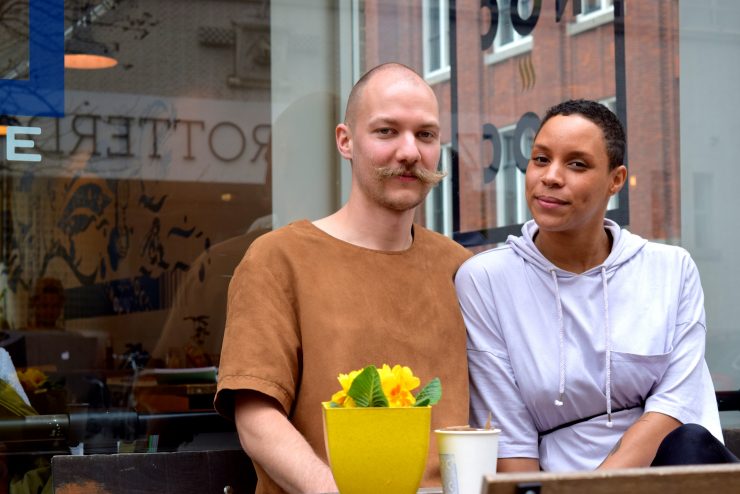
When news broke that a Coffee Mixologists competition would debut at the 2017 Amsterdam Coffee Festival, we could have guessed the winning duo would be half barista wunderkind and half cocktailer extraordinaire. It was a surprise, though, that the champions were not just partners-in-spirits, but spiritual partners too.
In fact, Rita Balrak, working in coffee for nearly a decade, and Sven Brokaar, a bartender at Rotterdam’s The Stirr, which he and two friends launched in early 2016, had become engaged only weeks before entering the competition.
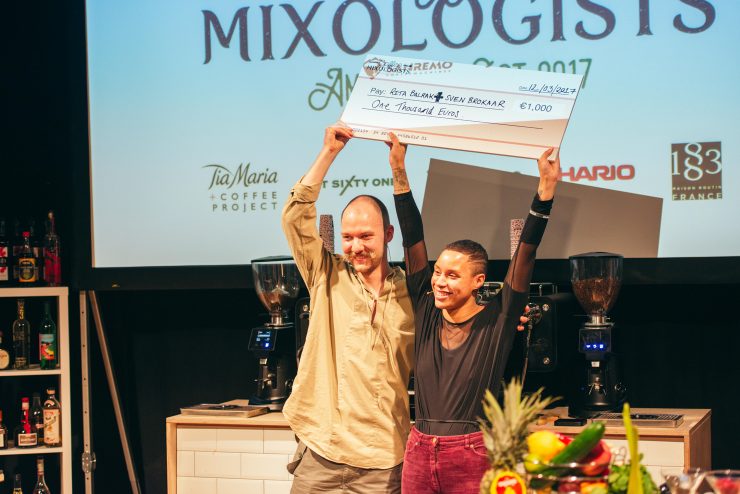
Sponsored by Tia Maria and Amsterdam roaster Lot Sixty One, the contest selected 16 teams from around the world to mixologize live before the festival audience and judges. Presiding were Anne Lunell of Sweden’s Koppi, Patrik Rolf Karlsson of April Coffee in Copenhagen, and Hani Asfdaai, owner of Rotterdam bar and restaurant Noah.
A caraway-infused tamarind espresso fizz is what got Balrak and Brokaar to the top. In the finals, by a mere half-point, they beat fellow Rotterdammers Rob Clarijs of De Zeeuwse Branding and Alberto Matallana of Barrelproof.
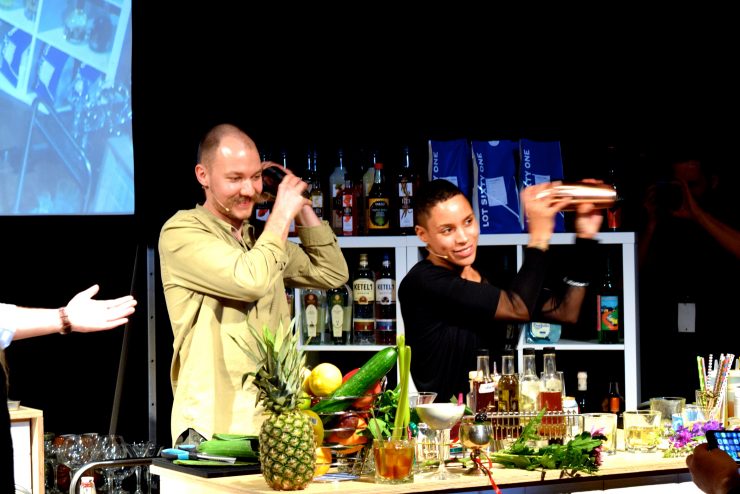
At Rotterdam cafe NOC NOC, where Balrak works part time, the winning couple spoke to Sprudge about coffee and cocktails—and what sweet bedfellows they make. With chemistry that makes Kunis-Kutcher cuteness and Knowles-Carter synergy pale in comparison, they also talked about Conceptum. Their recently established company aims to apply Balrak’s degree in architecture and Brokaar’s in sociology to help clients conceptualize and create well-designed venues in horeca.
Sprudge readers in London can catch Balrak and Brokaar creating their winning drink at the London Coffee Festival. They’ll be presenting a session at The Lab on Sunday April 9th, 12pm, titled “When Barista Meets Bartender.”
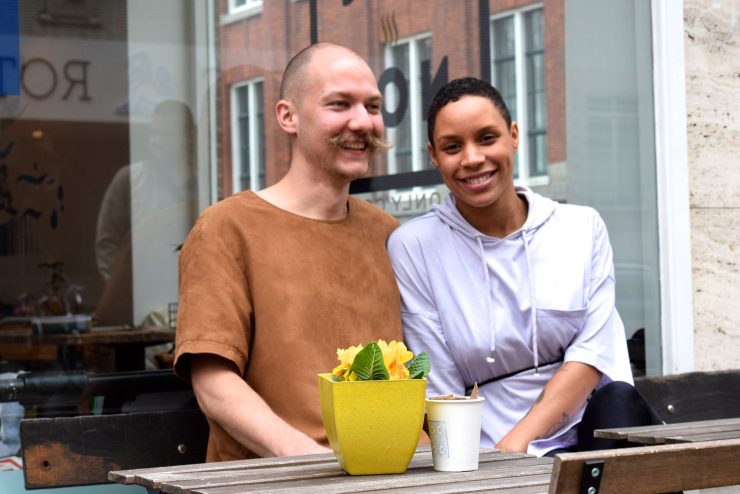
What made you enter the competition?
Rita Balrak: Actually, a friend of ours tagged us in the post on Facebook. It was somewhere in November that we saw the post, and in September we had gotten engaged.
Sven Brokaar: We thought they wouldn’t forgive us if we didn’t enter the competition because we’re a bartender-barista couple.
Was the experience what you expected?
Balrak: No, not at all! I got so nervous every round, with the microphone and the spotlight. I didn’t expect it to be that big—it was really a crowd.
Brokaar: When we entered we were like, “Oh, we have a shot at winning this,” because we thought it was a Dutch competition. And we said, “Well, there’s gonna be a couple guys from Amsterdam, a couple guys from smaller cities.” But when we saw the whole thing we’re like, “OK, that’s a lot more countries than the Netherlands!” We couldn’t taste all the drinks that everybody made, but we saw how they were made, and I was impressed.
Tell us about the drink that won you the competition.
Brokaar: The final drink that was judged was a rum-tamarind-coffee fizz.
Balrak: So we had espresso infused with caraway seeds, tamarind syrup Sven made at home, Tia Maria, and the coffee bitters that we made in the video.
Brokaar: Topped with a soda—
Balrak: —using egg white. Then we added crazy garnish because we had brought everything, including some flowers we bought at the station.
Do you mean you bought flowers at a train station?
Balrak: Yeah we did. Amsterdam, Central Station.
Brokaar: That’s also something we do at Stirr. We used to buy edible flowers to garnish drinks, but nobody ever ate them because they taste exactly like non-edible flowers. This was really quite expensive—it’s like four euros for a little box—so we thought: let’s just buy normal flowers. But since we started buying normal flowers, everybody started asking: can we eat them?
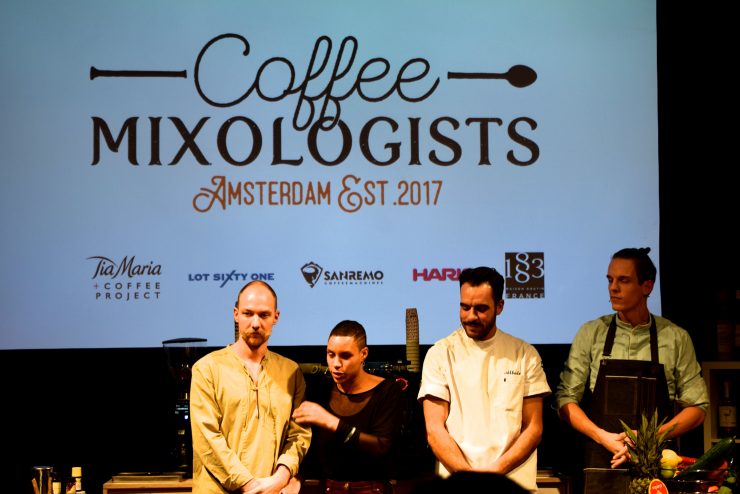
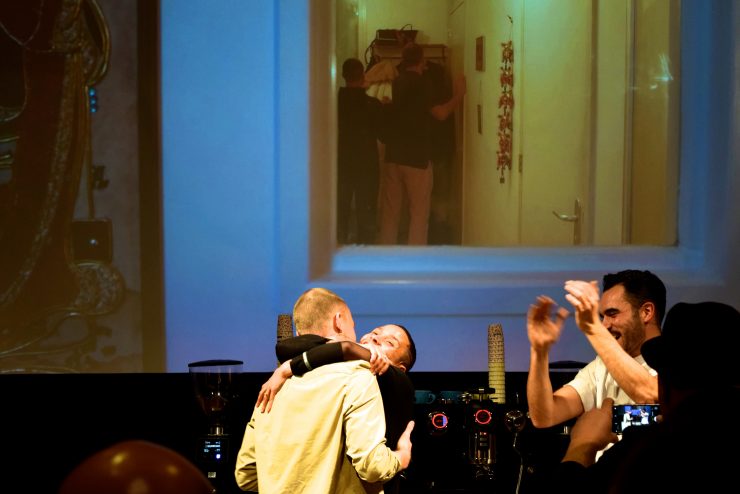
Two rounds required you to make a “new, innovative coffee-based cocktail” from ingredients in a mystery box. How’d that go?
Balrak: We had 15 minutes. We had to use a minimum of two ingredients from the mystery box. And we couldn’t add anything of our own. We had to use just what was in the pantry.
Brokaar: In one of those rounds, the mystery box was the herb garden, which included basil, bay leaf, ginger, lemongrass, and mint. We settled on espresso because there was time pressure, and you can use espresso in many different ways—in combination with chocolate as an ingredient, but also in combination with something fresh.
Balrak: If we would have gotten chocolate, cream, and milk in the mystery box, we knew that filter coffee would just get lost in there.
Brokaar: It was a matter of improvisation, but at Stirr we work without a menu. Improvisation is our daily, weekly routine, so we had some experience-based advantage in this regard at the competition.
How did you develop your signature drink, the one seen in your competition application video?
Balrak: We e-mailed Five Elephant, and they sent us some beans to try. We liked the Kenya Kamwangi, it was so sweet—blueberries—so that’s why we used it. I thought it was important to show everything we’ve got, like different techniques in coffee, all the stuff that Sven makes himself at Stirr. So based on the coffee, we thought of things to add. I wanted to make bitters in the syphon, and Sven wanted to make some syrup and a puree.
Brokaar: We added blueberries to accentuate the blueberry notes in the coffee. Then we added a fig and plum syrup to give it some more body, and then a little bit of mescal.
And the name?
Balrak: Cafe Mulata. Yeah, that was just Mexican slang for a mix of black and white, and we thought it was funny. We are a mix of black and white. The cocktail was coffee with white mescal—
Brokaar: —and it was also a bit brown. That’s the thing with coffee, you get brown cocktails.
After this experience, do you see a brighter future for coffee cocktails?
Brokaar: The gap between coffee and cocktails is narrowing a little bit. Still, even today a lot of bartenders drink really shitty coffee—it’s just the reality of nighttime hospitality. Usually the espresso machines are bad. It’s changing, it’s getting better, but to make a good coffee, you need a good espresso machine in your cocktail bar, or you need to make filter coffee.
Balrak: The cocktails we made in the different rounds, most of them were based on filter. So that’s an easy way to introduce coffee in different cocktail bars, where they don’t need an espresso machine that costs a couple thousand dollars.
What does the future hold for you?
Balrak: We really wanna have a baby, we wanna have a lot of babies, so that’s the main focus for now. And to get our business started. We really want the first project to happen this year.
Brokaar: We definitely want to keep working in hospitality kinds of things, but not necessarily behind the bar. As far as our company Conceptum goes, we have a lot to offer in terms of practical experience. For example, we sometimes notice, at a place that’s just been opened, little things that show the people who created the concept have not worked behind the bar or behind the coffee machine.
Balrak: Or, when we are working somewhere, we notice some difficulties at the bar.
Brokaar: Usually the best bars are built by bartenders, and the best coffee bars are—
Balrak: —built by baristas.
Karina Hof is a Sprudge staff writer based in Amsterdam. Read more Karina Hof on Sprudge.
The post Barista & Bartender Champs In Love Win Big appeared first on Sprudge.

